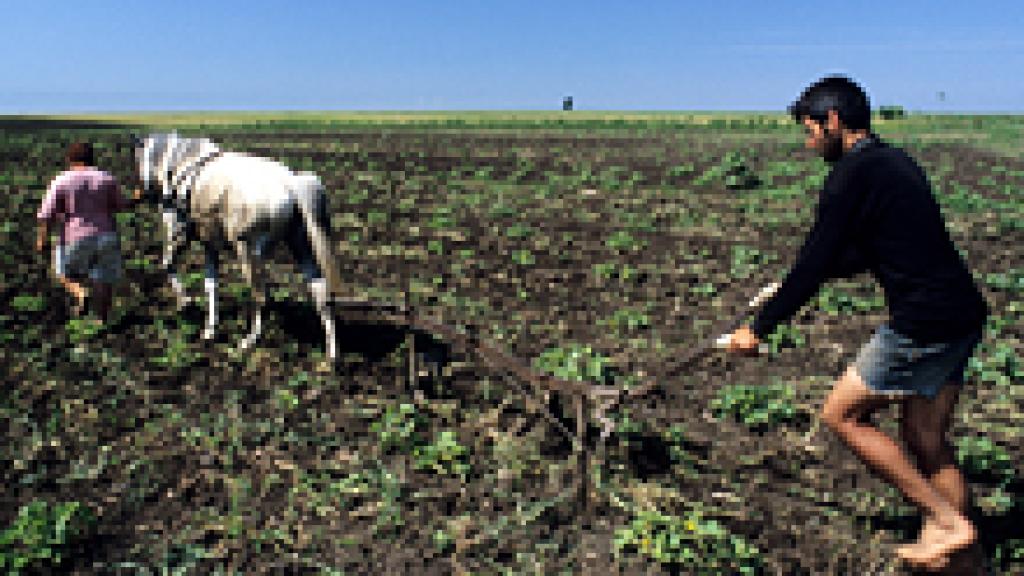Droughts
Many people consider droughts to be rare, but in fact they are a normal and recurrent feature of the climate. Drought events are regional phenomena, affecting transnational water management. Unfortunately, droughts have a high damage potential: economic losses, ecological damages, and implications on human health.

What are droughts?
When asked to define drought, there isn't just one right answer. Many different definitions exist. Drought implies a lack of moisture for an extended period of time, which in turns causes a deficit of moisture in the soil. This can mean different things for different areas. For areas which receive high amounts of precipitation (rain, snow), a condition of drought can develop more rapidly than in an area which doesn't.
Many problems can arise due to droughts, including crop damage and water supply shortages. The severity of a drought mostly depends on the degree of the deficiency, its duration, and the size of the affected area. The seasonal timing is also a significant factor with the duration of droughts.
Droughts result from a combination of meteorological, physical and human factors. Their primary cause is a deficiency in rainfall and the timing, distribution and intensity of this deficiency in relation to existing storage, demand and water use. Temperature and evapotranspiration may act in combination with insufficient rainfall to magnify the severity and duration of droughts. Moreover, due to changes in land use, water demand and climate the droughts in future may become more frequent and more severe.
Examples in the Danube River Basin
|
When |
Where |
Why |
|
1992/1993 |
Bulgaria, Hungary |
very hot and dry summer (1992), continued with below average rainfall until October 1993; very low soil moisture in Bulgaria caused a severe loss of agricultural production |
|
1996 |
Bulgaria |
hot and dry summer across the entire country |
|
2003 |
Danube Basin |
below-average rainfall in combination with above-average temperature throughout the Danube Basin. In September the discharge level in the lower Danube basin reached the absolute minimum since 1840 |
| 2015 | Danube Basin | combination of rain shortages and very high temperatures. Significant drought phenomena were experienced in Austria, Bosnia and Herzegovina, Croatia, the Czech Republic, Germany, Hungary, Moldova, Serbia, the Slovak Republic, Slovenia and Ukraine. Bulgaria and Romania did not report significant droughts phenomena in 2015. |
2015 Droughts in the Danube River Basin
In 2015 significant parts of the Danube River Basin were affected by droughts that negatively impacted different water-dependent economic sectors, vegetation and the aquatic environment. This is the latest of a series of events, which occurred in Europe during the last decade. Similar to the summer of 2003, a large part of continental Europe was affected by a severe drought in summer 2015, as a consequence of the combination of rain shortages and very high temperatures which resulted in higher requirement of plant water. Significant drought phenomena were experienced in Austria, Bosnia and Herzegovina, Croatia, the Czech Republic, Germany, Hungary, Moldova, Serbia, the Slovak Republic, Slovenia and Ukraine.
Following the 2015 droughts event, the ICPDR decided at the 18th Ordinary Meeting in December 2015 “to elaborate a report on the impacts of droughts in the Danube Basin in 2015, the measures taken and lessons learned”. The 2015 Droughts in the Danube River Basin Report includes an overview on the main characteristics of the meteorological and hydrological situation during 2015, summarizes the main impacts on water-related sectors and includes an overview of measures which were taken by the individual Danube countries. Based on the analysis and discussions, lessons learned and conclusions for the Danube basin wide and national level were agreed, as summarized in the final chapter of the Report. The Report was adopted by the ICPDR at the 19th Ordinary Meeting in December 2016 and can be downloaded from this page.





